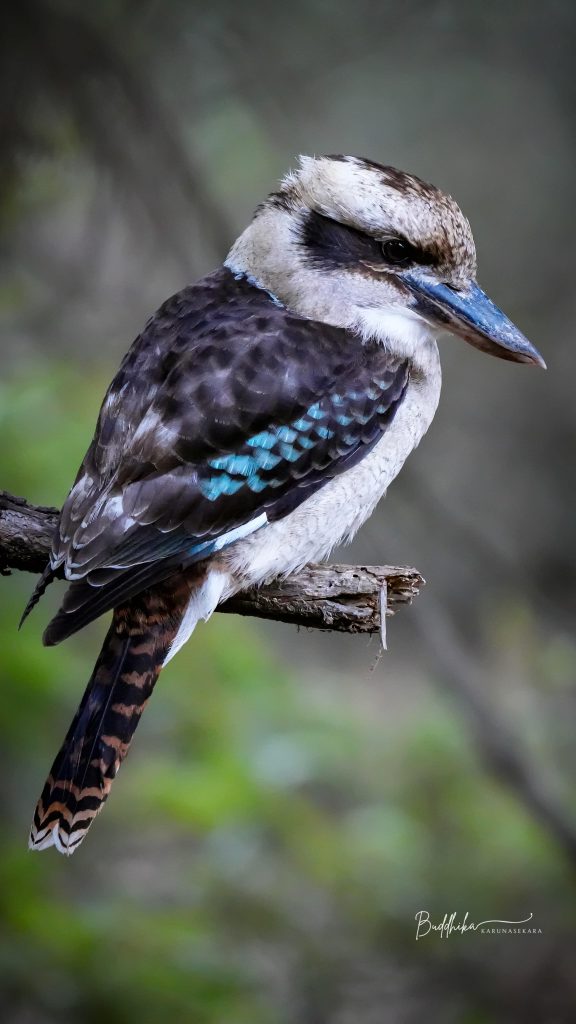
Perched on high branches, with feathers fluffed in the morning light, the kookaburra watches the waking world below. Its unmistakable call, part cackle, part chorus, rolls across the bush like a ripple of laughter. More than just a sound, it is a signal woven into the Australian landscape, grounding the kookaburra not only in forest and sky, but in story, ritual and national memory.
In many Aboriginal Dreaming stories, the kookaburra is not simply a bird but a timekeeper, a morning herald whose laughter signals the beginning of each new day. According to some traditions, the creator spirits asked the kookaburra to laugh at dawn to wake the people and the world, helping maintain the rhythm of life across the land.
Among the Dharawal and other First Nations groups, the kookaburra’s voice is associated with the sun’s rise and the renewal of light. Its morning chorus is not merely a call, but a ceremony, a joyful reminder of continuity, balance and the natural order.
In settler folklore, kookaburras came to symbolise the bush itself, tough, unpredictable and full of character. Their presence is often seen as a sign of home, and their call, likened to human laughter, has inspired generations of songs, poems and stories. In rural communities, they are said to bring good weather, and old tales warn against mocking the bird, lest the bush spirits take offence.
Perhaps nowhere is the kookaburra more beloved than in children’s culture. The song Kookaburra Sits in the Old Gum Tree has introduced countless children to this charismatic bird, embedding its image into playgrounds and classrooms across the world. In animated stories and picture books, the kookaburra often plays the wise observer or the good-natured trickster, watching from above with knowing eyes.
To naturalists, the kookaburra is a marvel of adaptation. Though it belongs to the kingfisher family, it rarely eats fish, preferring snakes, lizards and small mammals. Its hunting style, sharp eyesight and family-based nesting behaviour reveal a bird that is both fierce and deeply social.
Whether laughing through early morning mist or perched in silent watch above the scrub, the kookaburra remains one of Australia’s most enduring natural voices. A bird of story and spirit, whose echoing call reminds us that nature, too, has a sense of humour.
